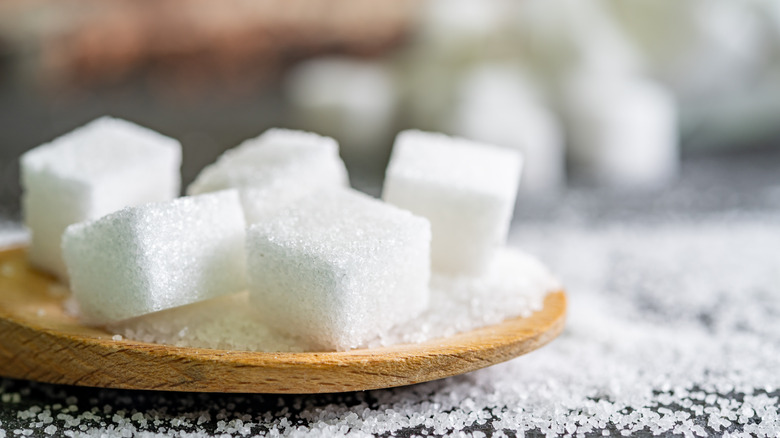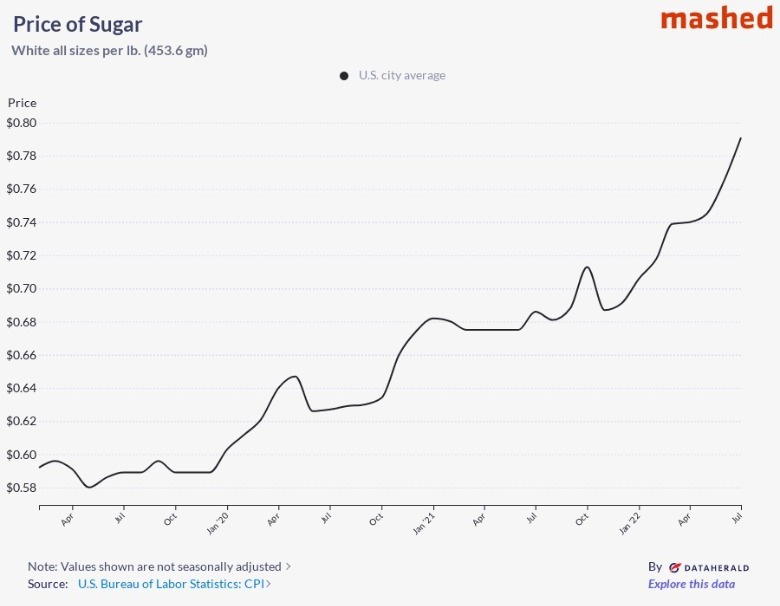Sugar's Inflation Rates Will Give You Sticker Shock
When the home-baking craze took off in the early months of the pandemic, all the trappings of comforting sugary confections suddenly became rare commodities at the grocery store. (We wouldn't be surprised if a Jamie Lee Curtis in "Christmas With the Kranks" situation went down more than once over those last bags of flour.) Instant yeast was purchased in droves by newfangled bread makers, King Arthur Flour's entire stockpile was wiped out in just 10 days, and the old line of borrowing a cup of sugar from a neighbor became a reality for those who dared to swap food supplies with those outside their quarantine pod.
As The New York Times puts it, the world was "still short of everything" come winter 2021. Even so, it seemed like the production of household baking supplies may have finally started catching up to demand again. But lately, factors like the war in Ukraine and those pesky, seemingly never-ending supply chain issues have recently caused items like wheat (read: bread) to once again soar in price, beyond the average consumer's financial comfort zone. Sugar is on that list, too.
Sugar export caps in India may have jacked up prices
Sugar has gone nowhere but up for the last few years, and not in a good way. According to recent data compiled by the U.S. Bureau of Labor Statistics, which shows the price of white sugar by the pound in U.S. cities, the product has risen nearly 13% from January 2022 to July of 2022. What's more, July's average of $0.79 a pound is even higher than its price in the first months of the pandemic, which averaged between $0.62 in March 2020 to $0.64 in April and May.
Despite predictions to the contrary (including a February Nasdaq poll that said sugar prices would fall by late 2022 and into 2023 and a June 2022 USDA report with a similar outlook), sugar prices aren't letting up — but it may not be that way for much longer. Sugar prices rose when India, the second-largest sugar exporter in the world, announced a restriction on the product that capped exports at 10 million tons through September to "keep prices in check" (per CNN).
But in early August, Business Standard reported that the country's food ministry expanded that cap to 11.2 million tons, writing that "sufficient availability of sugar in the country at reasonable price and retail price [will] likely to remain stable" this year. Let's cross our fingers and hope that outlook holds water (or better yet — sugar).

